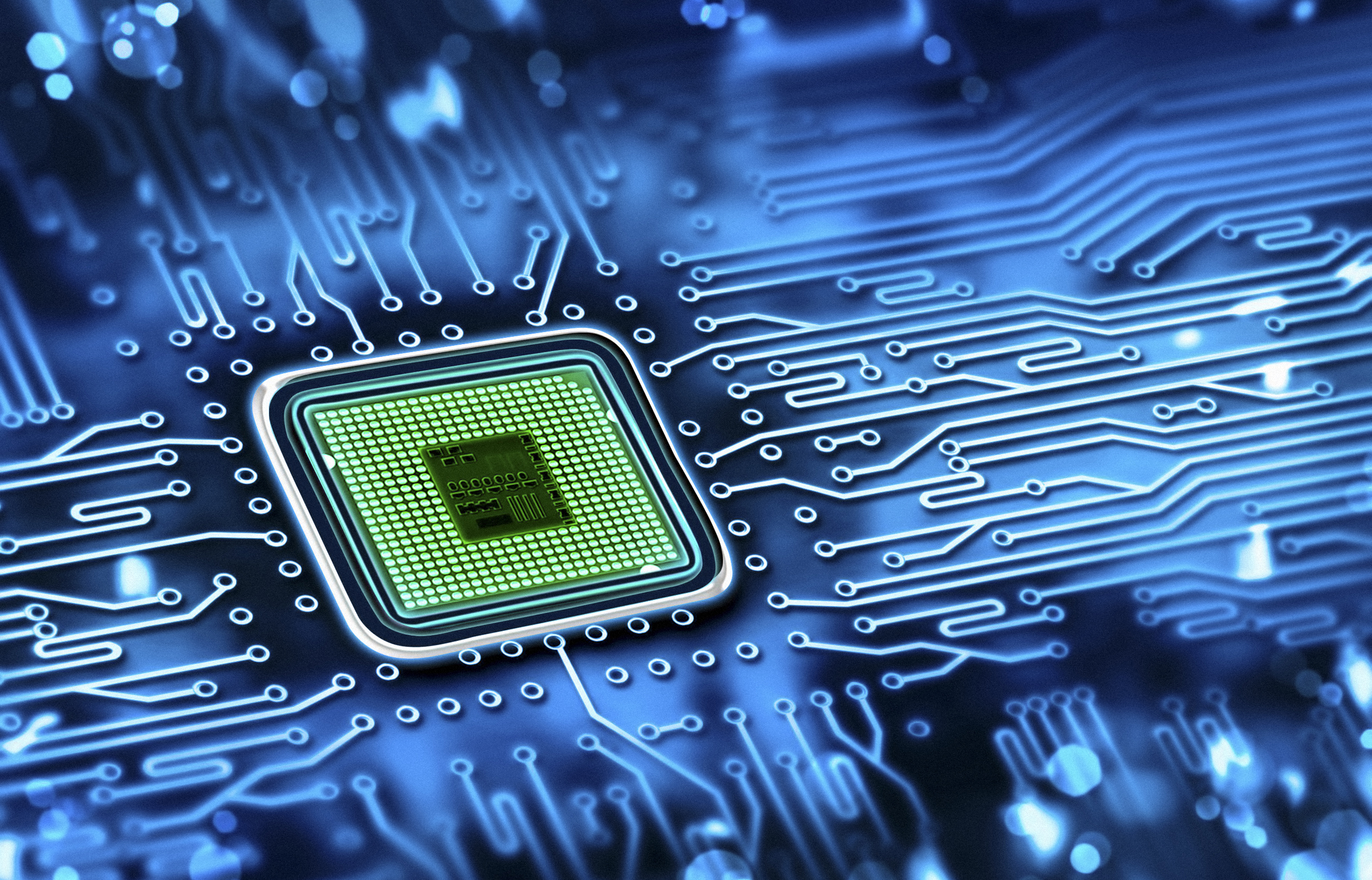The next great race between the U.S. and China will be over computer chips
Here's why


There's a new technology race brewing between the U.S. and China. And if it gets going, it won't be in arms or spaceships or nuclear power. It will be in computer chips.
For a long time, America has dominated the world of advanced computing. Intel, a U.S. company, is the globe's biggest chipmaker, and controls 96 percent of the computer server market. The supercomputer research organization Top500 found the U.S. was home to between 225 and 300 of the world's 500 fastest computers from 1993 to the beginning of 2015. And then those numbers fell off a cliff.
The U.S. total first dropped precipitously in November 2015. Six months later, China had already pulled ahead: 167 supercomputers to America's 165.
The Week
Escape your echo chamber. Get the facts behind the news, plus analysis from multiple perspectives.

Sign up for The Week's Free Newsletters
From our morning news briefing to a weekly Good News Newsletter, get the best of The Week delivered directly to your inbox.
From our morning news briefing to a weekly Good News Newsletter, get the best of The Week delivered directly to your inbox.
Even at the speed of technological change, China's rise was lightning fast. Fifteen years ago it didn't have any supercomputers among the top 500. Even through the first report of 2015, it didn't get above roughly 75. Then it rocketed upward.
"This is the first time that the Chinese have more systems than the U.S., so that, I think, is a striking accomplishment," Jack Dongarra, a professor at the University of Tennessee who created the Top500 methodology, told Bloomberg.
And it's not just quantity over quality, either; China now hosts the two fastest computers in the world. The Tianhe-2, the second-place holder, is capable of 33 quadrillion calculations per second. The first-place holder is the Sunway TaihuLight, which was unveiled in June and can do 93 quadrillion calculations per second. The third-place machine, here in America, is only one-fifth as fast.
But here's the real twist: The Sunway TaihuLight was built entirely with Chinese-made chips. Even the Tianhe-2 relied on Intel parts.
A free daily email with the biggest news stories of the day – and the best features from TheWeek.com
"It's not based on an existing architecture. They built it themselves," Dongarra continued.
The TaihuLight is already running several applications designed to do things like weather modeling and big data analysis. Three of them are even finalists for the Gordon Bell Prize — one of the most prestigious honors in computing. The TaihuLight definitely isn't for show.
So how did China do it? Basically, it called a moonshot.
Even as recently as 2013, China spent more on computer chip imports than oil imports. In the second half of the 1990s, the Chinese government spent less than $1 billion on research. But in 2014, China announced a plan to drop $150 billion on the industry over the next decade, pulling it even with Intel's level of investment. China's goal is ambitious: to domestically produce 70 percent of the chips used in Chinese computers within 10 years, and to build a machine that's 10 times faster than TaihuLight by 2020. And it looks like China is well on its way to getting there.
Of course, from the perspective of most economists, this focus on national dominance is goofy. If another country is better than you at making something, why not just let them make it and then buy it from them? Strictly speaking, international economics isn't and needn't be a competition — one country's advances should make everyone better off.
But this is where the pretty math of economics meets the very human mess of national security and geopolitics.
Major supercomputers like TaihuLight can be used in fields like cybersecurity and nuclear weapons. Any country that doesn't fully trust their trading partners might be wary of buying parts and hardware from them, out of fear of viruses and other forms of infiltration, for example. "I think there's good reason to want to safeguard things," Dongarra told The Week in an interview. "And the Chinese probably have the same reaction."
Of course America might also be worried about giving China an edge. In August of last year, the U.S. Department of Commerce prohibited Intel from selling its high-end Xeon processor chips to four major sites in China. Dongarra said those sites included both where the Tianhe-2 was developed and where it's now housed. The updated U.S. rules state that entities are blacklisted if they pose "a significant risk of being or becoming involved in activities that are contrary to the national security or foreign policy interests of the United States." And the Tianhe-2 has been allegedly used in nuclear weapons testing.
The next question is, what will the U.S. do about this? Unlike China's ramp-up, U.S. federal investment in computer science and other forms of research and development has been on a long, slow downward trajectory since the 1970s. Some politicians, including some Republicans, are pushing for more money for the computer and semiconductor fields specifically — though they may find themselves stymied by Congress' enthusiasm for austerity.
At the moment, Intel's technology for making computer chips remains more advanced than China's. So America is still technically capable of producing a more powerful system. In 2018 the Department of Energy is supposed to receive three machines with higher computational power than the TaihuLight. "But two years is half an eternity in computer-time," as Wired put it. State-of-the-art plants worth billions can become obsolete in five years. Meanwhile, sales of Chinese-made semiconductors to buyers in China roughly doubled from 2011 to 2015.
For now, major American chipmakers can still count on China needing them as much as they need China's markets. But those days may be numbered.
Racers, start your engines.
Jeff Spross was the economics and business correspondent at TheWeek.com. He was previously a reporter at ThinkProgress.
-
 The ultimate films of 2025 by genre
The ultimate films of 2025 by genreThe Week Recommends From comedies to thrillers, documentaries to animations, 2025 featured some unforgettable film moments
-
 Political cartoons for January 3
Political cartoons for January 3Cartoons Saturday's political cartoons include citizen journalists, self-reflective AI, and Donald Trump's transparency
-
 Into the Woods: a ‘hypnotic’ production
Into the Woods: a ‘hypnotic’ productionThe Week Recommends Jordan Fein’s revival of the much-loved Stephen Sondheim musical is ‘sharp, propulsive and often very funny’
-
 How Bulgaria’s government fell amid mass protests
How Bulgaria’s government fell amid mass protestsThe Explainer The country’s prime minister resigned as part of the fallout
-
 Femicide: Italy’s newest crime
Femicide: Italy’s newest crimeThe Explainer Landmark law to criminalise murder of a woman as an ‘act of hatred’ or ‘subjugation’ but critics say Italy is still deeply patriarchal
-
 Brazil’s Bolsonaro behind bars after appeals run out
Brazil’s Bolsonaro behind bars after appeals run outSpeed Read He will serve 27 years in prison
-
 Americans traveling abroad face renewed criticism in the Trump era
Americans traveling abroad face renewed criticism in the Trump eraThe Explainer Some of Trump’s behavior has Americans being questioned
-
 Nigeria confused by Trump invasion threat
Nigeria confused by Trump invasion threatSpeed Read Trump has claimed the country is persecuting Christians
-
 Sanae Takaichi: Japan’s Iron Lady set to be the country’s first woman prime minister
Sanae Takaichi: Japan’s Iron Lady set to be the country’s first woman prime ministerIn the Spotlight Takaichi is a member of Japan’s conservative, nationalist Liberal Democratic Party
-
 Russia is ‘helping China’ prepare for an invasion of Taiwan
Russia is ‘helping China’ prepare for an invasion of TaiwanIn the Spotlight Russia is reportedly allowing China access to military training
-
 Interpol arrests hundreds in Africa-wide sextortion crackdown
Interpol arrests hundreds in Africa-wide sextortion crackdownIN THE SPOTLIGHT A series of stings disrupts major cybercrime operations as law enforcement estimates millions in losses from schemes designed to prey on lonely users
